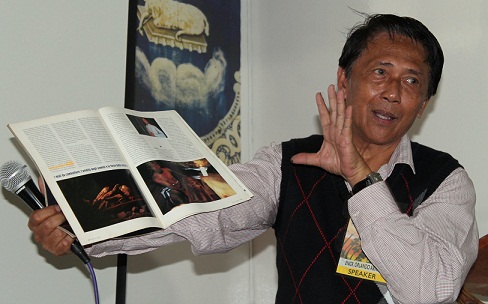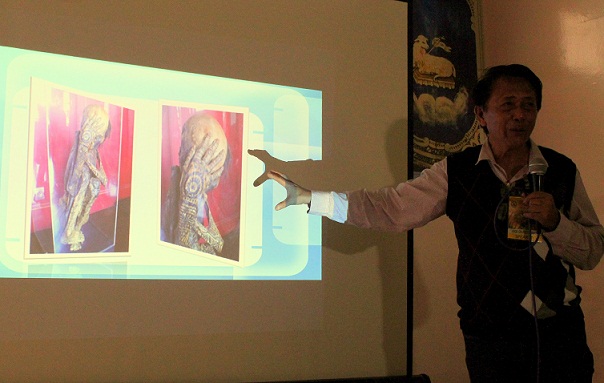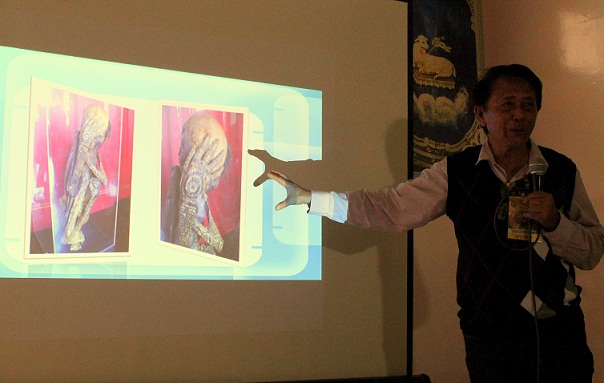By OFELIA C. EMPIAN
BAGUIO CITY—Two mummies from the Cordillera have found their way to Europe and regaining them would require a tedious process involving national and local agencies, and the assistance of UNESCO, says Engineer Orlando Abinion, a conservation consultant at the National Museum.
One of the mummies is in a medical school at the University of Granada in Spain and the other one is in a private collection, he said, without disclosing its exact location.
Speaking at the recent 5th Tam-awan International Arts Festival (TIAF) held here, Abinion said thorough studies are necessary to ascertain the origin of the mummies and other information on their background, but any research would need an authorization.
He said he will ask the National Commission for Culture and Arts, National Commission for Indigenous Peoples and the local government units concerned for their authorization to jumpstart the research.
Information about the mummies was relayed to Abinion by James Delay, one of the coordinators of the World Mummy Congress, an exhibition of mummies and artifacts, who also sent him photographs.
The mummy at the university is reportedly labeled “Momia de Filipinas” and has been featured on Discovery Channel, he said. It is in a fetal position but bears no tattoos, which is a distinct mark of mummies from the Cordillera, where preserving the remains of prominent people was common practice centuries ago.
On the other hand, Abinion is quite sure that the mummy in the private collection is from the Cordillera due to its fetal position and the traditional designs in its tattoos, much like those of other Kabayan mummies in Benguet province.
“I went to Timbac cave and I went to look for that mummy with that very similar print—the sun on the back of its hand, so we made the comparison. I’m very positive that the one in Europe is ours,” he related, referring to the mummy in the possession of a private collector.
Timbac is in Kabayan town in Benguet, known for the mummy caves of the Ibaloi tribe.
But how to return the mummies to the Philippines is proving to be a challenge for Abinion. Apart from the research which Delay can help conduct, another matter is the funding needed to repatriate the mummies, he said.
There is a suggestion, he added, that a mummy exhibit be held in the United States to raise funds. With the help of Delay, Abinion said, they hope to convince the private collector in Europe to give the mummy back to the country, once the study is done.
 “We need the intervention of the UNESCO once the mummy is proven to be ours,” he said, referring to the United Nations Educational, Scientific and Cultural Organization.
“We need the intervention of the UNESCO once the mummy is proven to be ours,” he said, referring to the United Nations Educational, Scientific and Cultural Organization.
Abinion has for the past 13 years been involved in overseeing the preservation of Benguet mummies. He was responsible in bringing back Apo Anno, the most revered mummy from Benguet province, stolen from his resting place in 1918 and passed around the world from one private collector to another.
The preserved remains of the famed warrior, revered like a god during his life, was brought back and laid to rest at Maligcong, Buguias, Benguet only in 1999.
The announcement of Apo Anno’s return caught the attention of the international community.
Soon after, Abinion revealed, other private collectors started to come forward, saying that they also wanted to return the mummies that are in their possession.
“They contacted me directly not wanting the LGU to know that the mummies came from them,” he said referring to the private collectors who were from neighboring areas in Benguet and in Baguio City.
He said they were able to get back three mummies from private collections in Baguio City and 10 mummies from Sagada, Mountain Province.
Abinion and his team make regular visits to the burial caves, which have been proclaimed Philippine National Cultural Treasures, and are under the tentative list of world heritage sites of the UNESCO.

